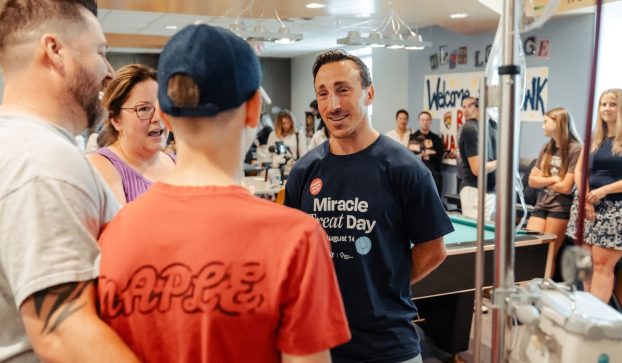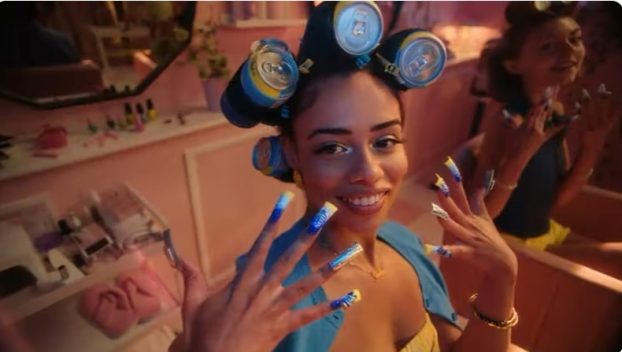
By Will Novosedlik
Call it a tipping point or call it critical mass, but it looks as though the pieces are in place for many of the gaps between men’s and women’s sports to start closing. Kelly Graham, VP of marketing at Adidas Canada, is certainly excited about that prospect, as well as the year that women’s professional sports is having.
Earlier this summer Media in Canada reported on a study by RBC and The Collective, a division of sports and entertainment agency Wasserman, entitled The New Economy of Sports: The Unparalleled Value of professional Women Athletes. It concluded that while a significant income gap remains between men and women in professional sports, women athletes wield greater influence on fans’ buying power.
The income gap is yawning. It is greatest in basketball, where the average women’s salary of $107K is dwarfed by the average men’s salary of $11.5M, a whopping 108x that of their female counterparts. In golf, men earn 10.5x more than women, in soccer it’s 7.5x and in tennis 1.2x. It means that women need to derive the lion’s share of their income (82%) from off-the-field activities such as sponsorships and endorsements.
The study surfaced an intriguing contradiction. While women have to work much harder for only a small fraction of what men make, they are nonetheless twice as valuable to brands, sponsors and investors because of their stronger relationships with communities and fans. When it comes to social media, women have half the number of followers but they engage them twice as much as men do.
It’s no wonder brands like Canadian Tire are supporting women’s pro sports. The Professional Women’s Hockey League (PWHL) has announced a multi-year agreement with Canadian Tire Corporation, naming the industry-leading retailer the League’s first founding partner. This collaboration included sponsorship of the League’s inaugural draft where 90 of the best women’s hockey players in the world were selected by PWHL teams on September 18 in Toronto.
Likewise, brands such as Nike, Coca Cola and Delta are coming together to promote similar investments. According to an article by CNBC, Ally is looking to spend equal ad dollars on men’s and women’s sports over the next five years. Four-time Olympian and Gold medal-winning ice hockey star Angela Ruggiero has partnered with the insurer to create a coalition of major brands and media that will work to tackle some of the challenges in buying women’s sports inventory and to elevate investment in women’s sports.
Strategy spoke with Kelly Graham to drill down on Adidas’ support of women’s sports.
What is Adidas’ overall approach to supporting women’s sports?
For us, it’s always been about levelling the playing field so that everybody has access to and can enjoy a career in sports if they desire one. This year in particular, there’s really been a tipping point in the market with a lot of other brands getting involved and a lot of really key women’s sports moments happening both in Canada and around the world. Whether that’s the Women’s World Hockey Championship, the first WNBA game in Canada in May, the FIFA Women’s World Cup this summer, or draft day for the PWHL, we wouldn’t have necessarily thought this would happen a couple of years ago. So it feels like there’s a lot of momentum right now, and I think that’s going to continue into 2024 and beyond.
How long has Adidas been involved with women’s sports?
We’ve always supported female athletes. It’s also been a key part of our media and activation plans for the last while. I think that this year was particularly elevated because there were so many great sporting event moments to help tell that story and bring it to the forefront.
Even though there’s a growth in interest there’s still a lag in terms of media coverage and paid media. Do you see that changing?
Absolutely. We saw how quickly the WNBA game sold out earlier this year in Toronto. The viewership numbers for FIFA were out of this world. I think broadcasters are really starting to see the value and the size of the audience for women’s sports. And I think that also reflects what we’re seeing in the stands and from people watching at home: it’s not just women watching women’s sports, but all genders.
What are some of the more specific initiatives you have undertaken this year?
Most of our focus this year has been on our female athlete partners. We started off the year with a campaign around Natalie Spooner, who was training to get back on the ice to qualify for the women’s World Hockey Championship just a week after giving birth. We had some key focus areas around the WNBA game in Toronto. Then there was the Women’s World Cup. So for us, it’s been one campaign after another.
Earlier this year, we also announced that we were going to create the first-ever teen-and-under girls basketball league as part of the Adidas Gold Circuit. It’s a team for rising stars that provides a lot more exposure to college coaches and to media and to training equipment and facilities that they wouldn’t otherwise have access to. So, overall, it’s about giving them the opportunity and the tools that they need to really get out there and build a career in sports.























